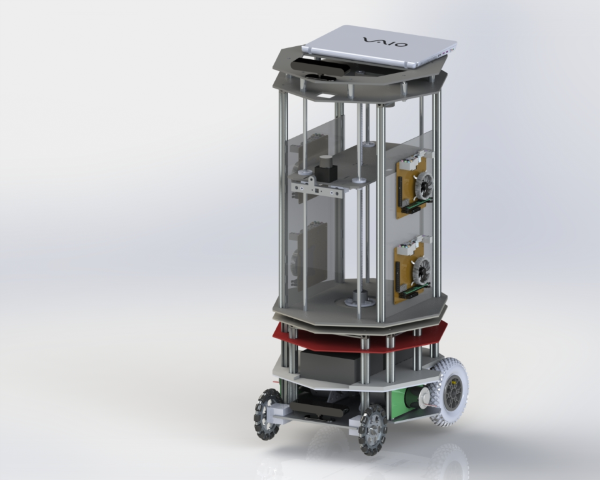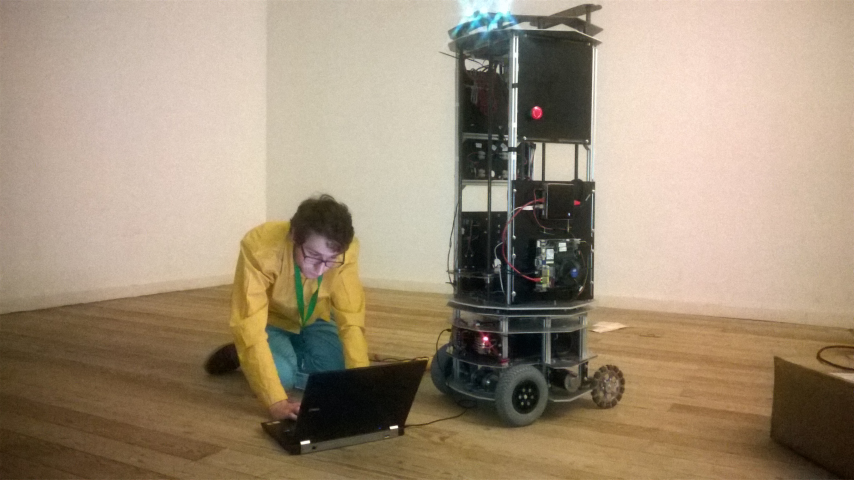Hardware platform for AI in robotics 'WIP' (2014-2016)
WIP is a robot that was developed primarily as a testbed for the development and evaluation of robot perception and navigation algorithms. For this reason, it was designed in a highly utilitarian fashion. Some design requirements of this proposed system included:
- The physical capability for the robot to carry on-board power should be high. This would substantially reduce disruption during testing/development.
- The robot should possess many mounting points/locations. This would allow the group to upgrade the robot as well as evaluate the most effective places to position sensors on the robot.
- There should be adequate space and power to utilise several high-powered PCs on-board the robot. The system should also possess a wireless bridge for off-board and/or cloud-based computation.
- The robot should have high mechanical integrity and should be reliable. This ensures that the robot can be robustly used for prolonged periods of time.

The robot is 1.3m tall, a height that is in the region of what is optimal for integration into home and office environments. It utilizes a differential drive configuration with two passive omni-directional wheels for stability. This feature helps ensure performance transferability between prototypes. The robot is controlled using the Robot Operating System (ROS).
From a design perspective, the system can be separated out into an upper and lower section. The lower section contains the differential drive mechanism and the batteries, and the upper section contains the housing for the majority of the robot’s sensors/computers/electronics as well as the manipulator assembly. The upper section contains two degrees of freedom, one rotational at the waist and a second prismatic joint that controls the vertical alignment of a platform housing a manipulator. The robot does not possess a default social interface. Instead a shelf was designed that can facilitate either the installation of a social interface or the positioning of a laptop computer.

The robot uses two 3D depth sensors; one mounted close to the floor and the second mounted in the upper torso. A Hokoyu 2D laser scanner is mounted in the upper section on top of the vertically adjustable shelf. A FireFly MV camera from Point Grey is mounted in the torso and provides additional visual information when required. The robot possesses two dedicated high-power on-board computers devoted to deliberative higher-order functionality. Both possess 4th generation Intel i7 processors, 16GB RAM and a solid state drive. These computers connect across a router. An Intel NUC (Intel i5, 8GB RAM, SSD) is used to interface between the low and high-tiers in the architecture.

